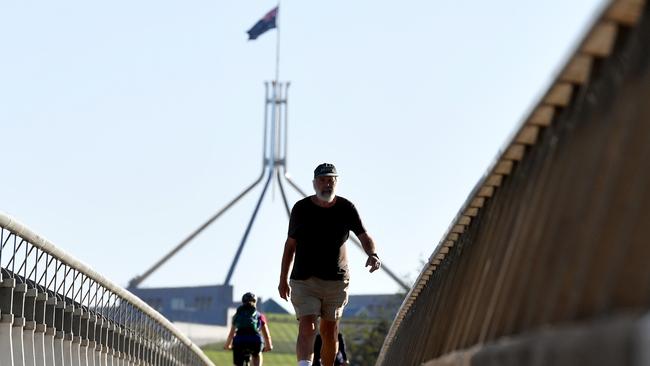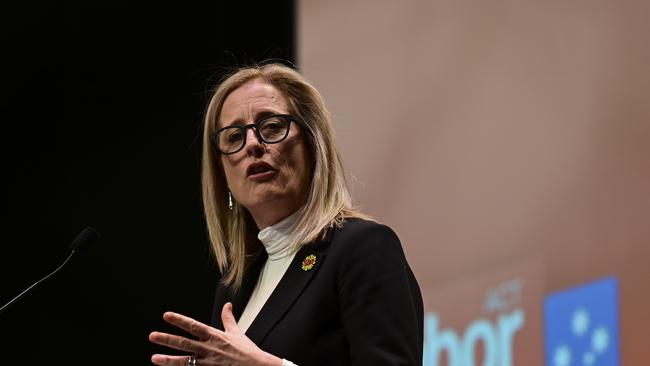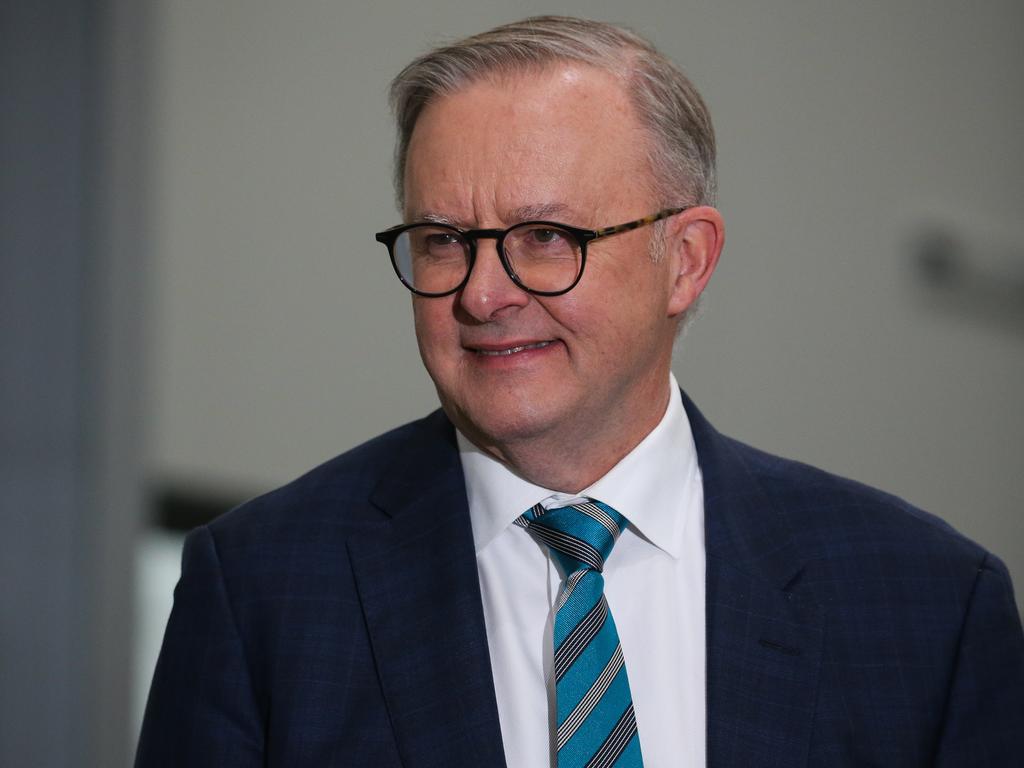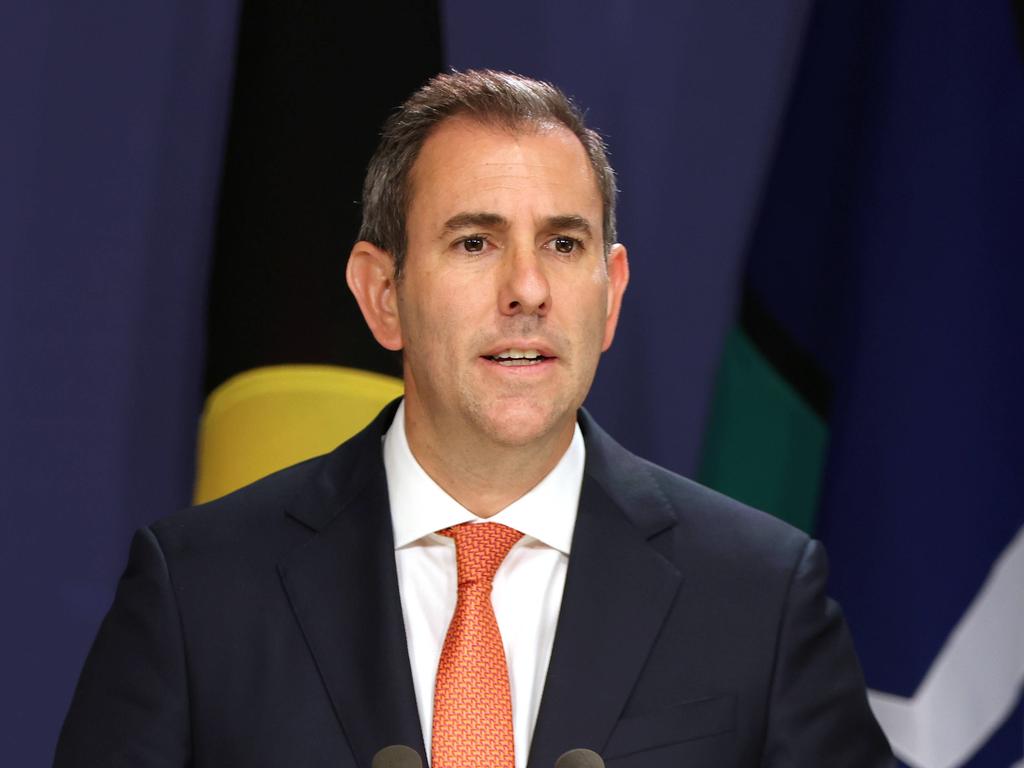ALP’s great inflation of ACT bubble
The $1bn lift in the annual wages bill for Canberra bureaucrats comes as Labor ploughs money into rebuilding the capacity of the public service.

The number of federal bureaucrats in Canberra has jumped by nearly 10 per cent in the first financial year since Labor seized power, driving a $1bn lift in the annual wages bill as the Albanese government ploughs money into rebuilding the capacity of the public service.
Australian Bureau of Statistics figures show total wages and salaries paid to federal public servants in the national capital also lifted by 10 per cent between 2021-22 and 2022-23, substantially higher than the 7.6 per cent increase for state government workers across the country.
The number of federal public servants in Canberra climbed from 96,500 in mid-2022, to 105,400 by June 2023, an increase of 9.2 per cent, the ABS data showed.
The total wages bill for these workers jumped from $9.3bn in 2021-22, to $10.3bn in the most recent financial year.
The rapid rise in headcount looks likely to extend into this financial year, after Government Services Minister Bill Shorten last weekend announced the Albanese government would spend an additional $228m on 3000 additional staff for Centrelink and Medicare.
Opposition finance spokeswoman Jane Hume said: “Australians should expect to maintain a world-class, efficient public service, but taxpayers also don’t want to see bloated and excessive spending on bureaucrats doing busy work.
“Under Labor, we have seen an additional 10,000 public servants created in their first year alone.”
Senator Hume said she doubted whether any Australian felt like they were better served by the government than they were a year ago. “It is incumbent on Labor to explain how an ever-expanding bureaucracy helps Australians as they deal with lower real wages, higher mortgages and Labor’s cost of living crisis,” she said.
Former Victorian premier Jeff Kennett said there was “no doubt” the ballooning of the public service was causing inflation, arguing the commonwealth public sector should be culled by 100,000.
Labor has made it a priority to rebuild the capacity of the commonwealth public service and reduce the number of expensive contractors and consultants – a process Public Service Minister Katy Gallagher claims has already generated $3bn in savings.

“The Albanese government is rebuilding the APS and delivering on our commitment to reduce outsourcing and develop capability in-house,” the spokeswoman said.
“In early 2023, the government completed an audit of employment which highlighted the previous government maintained a shadow public sector workforce of more than 53,000 third party employees.
“The government has invested in additional staff in critical service delivery areas such as veterans’ affairs and Services Australia, helping to reduce call waiting times for Australians.
“In the May budget we converted more than 3300 external labour positions to public service roles, delivering savings of around $810m over four years.”
The new figures come as the Community and Public Sector Union threatens to escalate industrial action across a number of commonwealth agencies, after the government’s offer of an 11.2 per cent pay rise for federal public servants over three years received lukewarm support from union members, despite well-received sweeteners including the right to work from home.
The CPSU has argued for a 20 per cent pay rise over three years, and on Thursday the Australian Federal Police Association described the 11.2 per cent wage offer as a “kick in the teeth”.
Mr Kennett said the federal public sector was “substantially overcooked – and that is at a time where we have fundamentally no unemployment”.
“So if ever there was a time for governments to indicate to the community and the rating agencies that they are serious about government inspired costs, now is the time to do it,” Mr Kennett said. “If I was the prime minister I would immediately be giving 100,000 public servants the opportunity of finding private employment. Invest in our frontline public servants – our teachers, our nurses, our law-and-order people – not in our backroom.”
Mr Kennett said a growing public service was inflationary as it was exacerbating skills shortages in the private sector while doing nothing to address productivity.
“They are sitting there shuffling paper and they are sitting there not making decisions,” he said. “We are employing people who in many cases do not only not add anything to our productivity levels, they stifle it … It is an appalling reflection that increasingly so much of our employment is within public sector rather than in the private sector.”
Fewer than one in three of the country’s 350,000 commonwealth public sector employees are based in Canberra, and the lift in federal employment in the three big east-coast states climbed by only 2.5 per cent.
Senator Gallagher last month released the Australian Public Service’s Strategic Commissioning Framework, which mandates that all “core” departmental work – such as developing cabinet submissions, drafting legislation and regulations, and policy formulation – must be done by APS employees.
In its first budget in October last year, the Albanese government cut $3.6bn from external labour, government advertising, travel and legal expenses over four years in line with Senator Gallagher’s post-election audit of “rorts and waste”.
During a Senate estimates session last month, Finance Department officials said spending on all federal contracts had fallen by $6bn in 2022-23.
The value of contracts going to the big four consulting firms – KPMG, Deloitte, EY and PwC – was $1.4bn last financial year, a fall of $200m on the previous year, the Senate economics legislation committee was told.
EY on Thursday announced it was sacking 232 workers, while PwC slashed 338 jobs a day earlier. KPMG has also reduced its headcount this year.
As at June, there were more than 2.43 million commonwealth, state and local government employees, up 3.5 per cent from the 2.35 million public sector workers a year earlier. Reflecting that state and territory authorities are responsible for the bulk of day-to-day services across areas such as health, education and policing, state public workers accounted for about three in every four taxpayer-funded employees around the country.
The country’s total public sector wages bill climbed by 6.9 per cent, or nearly $14bn, to $215bn, according to the ABS.
Additional reporting: Tom Dusevic







To join the conversation, please log in. Don't have an account? Register
Join the conversation, you are commenting as Logout